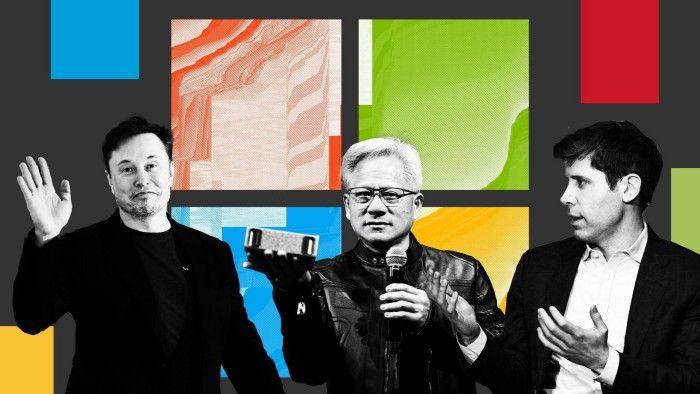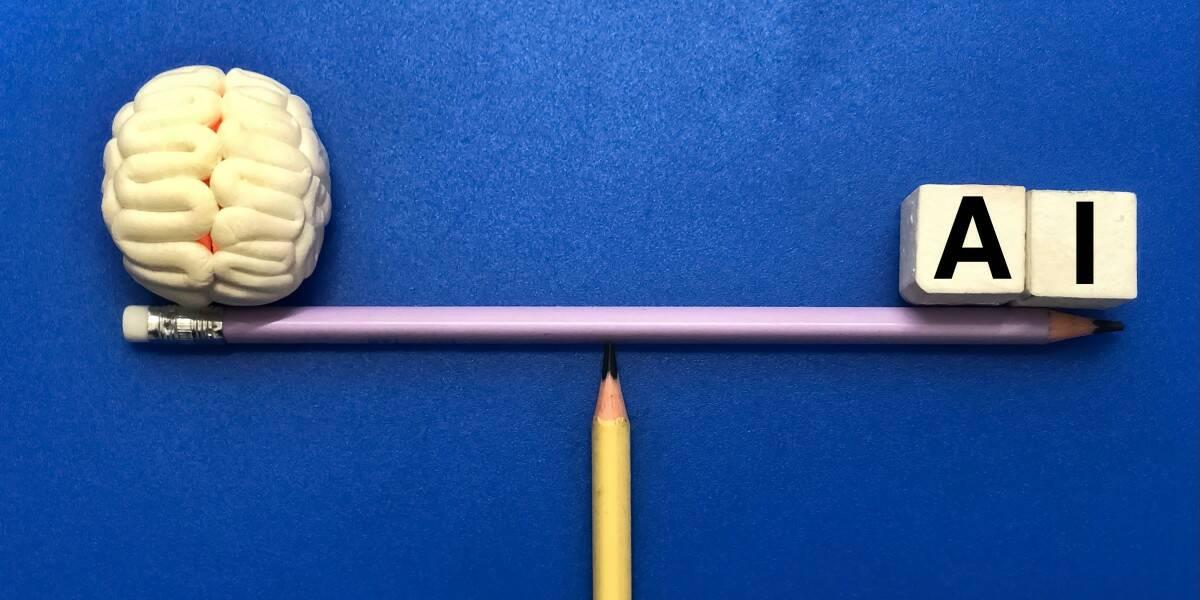Microsoft Partners with Swiss Startup Inait to Develop Brain-Simulating AI
2 Sources
2 Sources
[1]
Microsoft ties up with Swiss startup to develop AI that can simulate the human brain
In a nutshell: Microsoft has partnered with Swiss AI startup Inait to develop an AI model that simulates the reasoning ability of the mammalian brain. The two companies will first market the technology to the finance and robotics sectors before expanding to other industries. The AI behind the new platform builds on two decades of neuroscience research and features a "brain programming language" capable of learning from experience and understanding cause and effect. It also incorporates adaptive general intelligence, which could overcome the limitations of current AI systems. Inait claims these capabilities will drive a paradigm shift in the AI industry. The technology has many paractical applications. In the financial sector, the project will aim to deliver advanced trading algorithms, risk management tools, and personalized financial advice to customers. In robotics, the project focues on developing more intelligent robots that can adapt to complex work environments and situations in industrial settings. The project will utilize the Microsoft Azure cloud platform to expedite the gloabl deployment of the new technology. Inait is a relative newcomer in the AI industry, but its leadership has an impressive pedigree. The Financial Times notes that co-founder Henry Markram spent 20 years developing biologically accurate digital replicas of mammalian brains. That project, which produced 18 million lines of code, is now the foundation for Inait's brain simulation model. Although the original Swiss project focused primarily on the mouse brain, Markram believes his team can tweak the research to replicate other mammalian brains, including humans. He claims brain simulation models are generally more energy-efficient than current deep reinforcement models and learn much faster. Markram founded the nonprofit Open Brain Institute to provide researchers access to the Swiss project's simulation technology. However, while some aspects of the research are freely accessible, others require a subscription. Still, Markram believes the study could help scientists better understand complex and incurable neurological conditions like autism.
[2]
Microsoft and Swiss start-up to commercialise AI digital brain tech
The two companies will initially target the fintech and robotics sectors. Swiss start-up Inait aims to commercialise its digital brain artificial intelligence (AI) platform with the help of Microsoft. Announcing the collaboration yesterday (18 March), the two companies said they will work on joint product development, market strategies and co-selling initiatives, initially targeting the finance and robotics sectors. According to the 2017-found start-up, its AI 'brain programming language' delivers "cognitive abilities for real-world interactions" which overcomes the limitation of current AI systems, taking it toward "adaptive general intelligence". The company says that while current AI systems excel at pattern recognition and generation, they struggle to interact with "real-world complexity". Its solution, the digital brain technology, bridges this "adaptive automotive gap", claims Inait, by fusing convolutional neural networks, recurrent neural networks, graph neural networks and large language models to create intelligent action models. The collaboration will use the Microsoft Azure cloud platform and the tech giant's global reach to accelerate the deployment of Inait's products across the finance and robotics sectors. The two companies will focus on delivering advanced trading algorithms, risk management tools and personalised advice in the finance sector, while developing more intelligent and adaptable robots for industrial manufacturing for robotics. "This collaboration with Microsoft marks a pivotal moment for Inait," said Henry Markram, the founder and chairperson of Inait. "After two decades of R&D we now have digital brain replicas and the know-how to teach them to perform AI. Microsoft's global ecosystem is ideal to globally scale our disruptive digital brain-based AI." While the company's CEO Richard Frey said that, together, the two companies aim to "co-develop transformative industry solutions going forward". "We believe that Inait's approach to AI has the potential to bring significant value to the industry," added Catrin Hinkel, the CEO of Microsoft Switzerland. "Their neuroscience-inspired technology is truly innovative, and we are pleased to collaborate with them to bring these advancements to market, starting with the fintech and robotics sectors where we see opportunities for immediate transformation." In 2024, Microsoft invested in a Series B funding round into Figure AI, a start-up focused on humanoid robotics. The round raised $675m, also seeing participation from OpenAI, Nvidia and Intel Capital, among others. Don't miss out on the knowledge you need to succeed. Sign up for the Daily Brief, Silicon Republic's digest of need-to-know sci-tech news.
Share
Share
Copy Link
Microsoft collaborates with Inait to create an AI model that simulates mammalian brain reasoning, targeting finance and robotics sectors initially. The technology builds on neuroscience research and features a "brain programming language" for adaptive general intelligence.

Microsoft and Inait Join Forces to Revolutionize AI with Brain Simulation Technology
In a groundbreaking collaboration, tech giant Microsoft has partnered with Swiss AI startup Inait to develop an artificial intelligence model that simulates the reasoning ability of the mammalian brain. This partnership aims to push the boundaries of AI technology and create more adaptive and intelligent systems
1
2
.The Technology Behind the Digital Brain
Inait's AI platform, built on two decades of neuroscience research, features a unique "brain programming language" capable of learning from experience and understanding cause and effect. This technology incorporates adaptive general intelligence, which could potentially overcome the limitations of current AI systems
1
.The digital brain technology fuses various neural network types, including convolutional, recurrent, and graph neural networks, along with large language models to create intelligent action models. This approach aims to bridge the "adaptive automotive gap" that exists in current AI systems, which excel at pattern recognition but struggle with real-world complexity
2
.Initial Focus on Finance and Robotics
The collaboration will initially target the finance and robotics sectors, with plans to expand to other industries in the future. In the financial sector, the project aims to deliver:
- Advanced trading algorithms
- Risk management tools
- Personalized financial advice to customers
1
2
For the robotics industry, the focus will be on developing more intelligent robots that can adapt to complex work environments and situations in industrial settings
1
.Leveraging Microsoft's Global Reach
The project will utilize the Microsoft Azure cloud platform to expedite the global deployment of the new technology. This collaboration allows Inait to leverage Microsoft's extensive global ecosystem, potentially accelerating the adoption and scaling of their digital brain-based AI
2
.The Minds Behind Inait
Inait, although a relative newcomer in the AI industry, boasts impressive leadership. Co-founder Henry Markram spent 20 years developing biologically accurate digital replicas of mammalian brains. This research, which produced 18 million lines of code, now forms the foundation for Inait's brain simulation model
1
.Related Stories
Potential Advantages of Brain Simulation Models
According to Markram, brain simulation models offer several advantages over current deep reinforcement models:
- Greater energy efficiency
- Faster learning capabilities
- Potential for replicating various mammalian brains, including humans
1
Broader Implications for Neuroscience
While the commercial applications are promising, this research could have far-reaching implications for neuroscience. Markram founded the nonprofit Open Brain Institute to provide researchers access to the simulation technology, potentially aiding in the understanding of complex neurological conditions like autism
1
.Industry Perspectives
Catrin Hinkel, CEO of Microsoft Switzerland, expressed enthusiasm for the collaboration, stating, "We believe that Inait's approach to AI has the potential to bring significant value to the industry. Their neuroscience-inspired technology is truly innovative"
2
.As the AI landscape continues to evolve rapidly, this partnership between Microsoft and Inait represents a significant step towards creating more sophisticated, brain-like AI systems that could revolutionize multiple industries and advance our understanding of both artificial and biological intelligence.
References
Summarized by
Navi
[2]
Related Stories
Microsoft Positions Itself as AI Industry Leader at Annual Developer Conference
19 May 2025•Business and Economy

Microsoft Launches 'Humanist Superintelligence' Team to Build AI That Serves, Not Replaces Humanity
06 Nov 2025•Technology

Microsoft Gains Full Access to OpenAI's Custom Chip Designs in Strategic Partnership Expansion
13 Nov 2025•Business and Economy

Recent Highlights
1
Google launches Gemini 3 Flash as default AI model, delivering speed with Pro-grade reasoning
Technology

2
OpenAI launches GPT Image 1.5 as AI image generator war with Google intensifies
Technology

3
OpenAI launches ChatGPT app store, opening doors for third-party developers to build AI-powered apps
Technology





